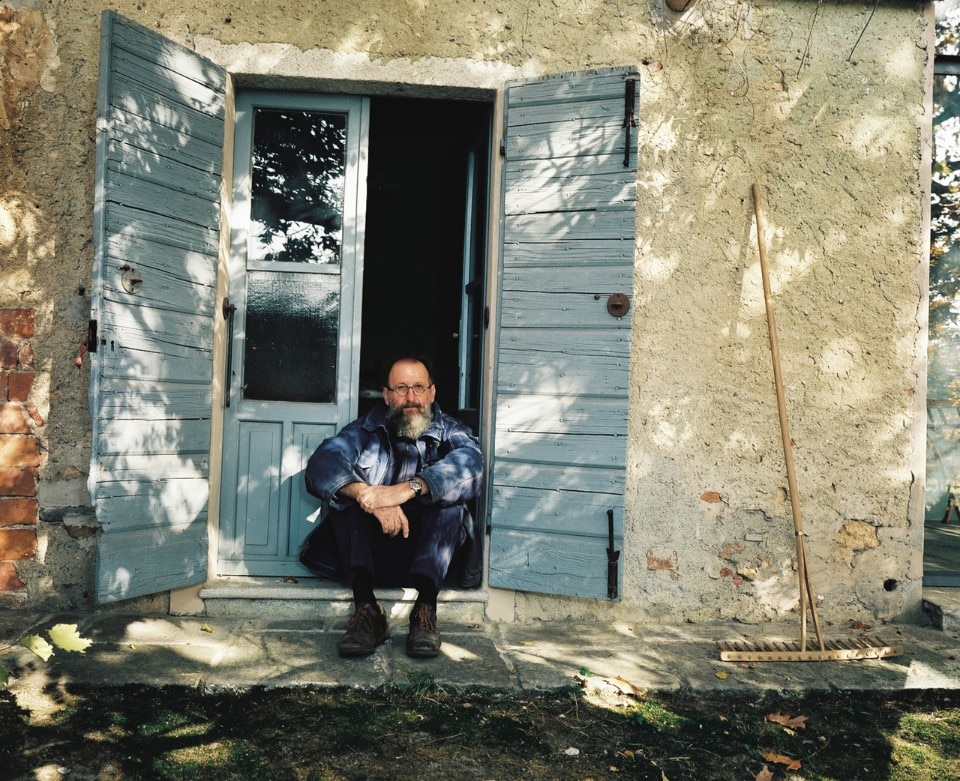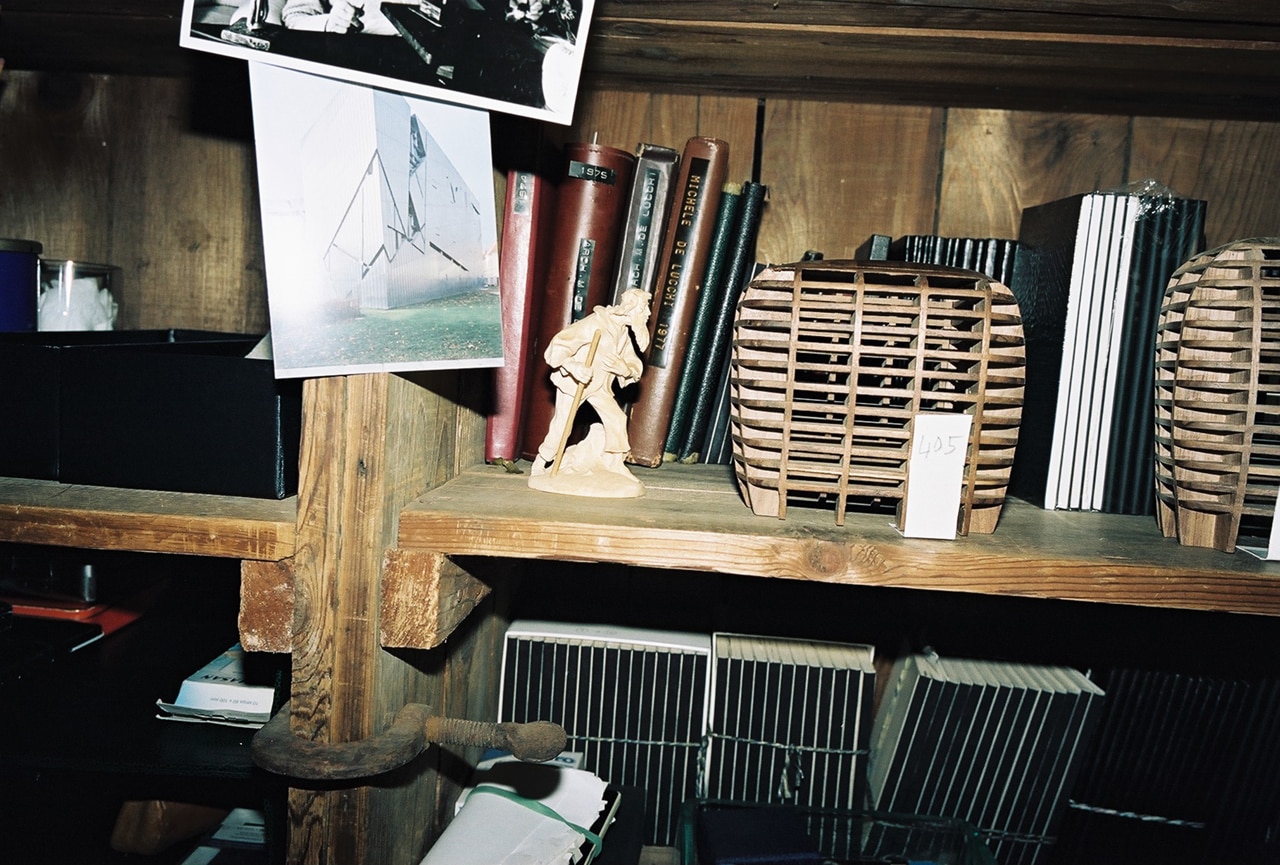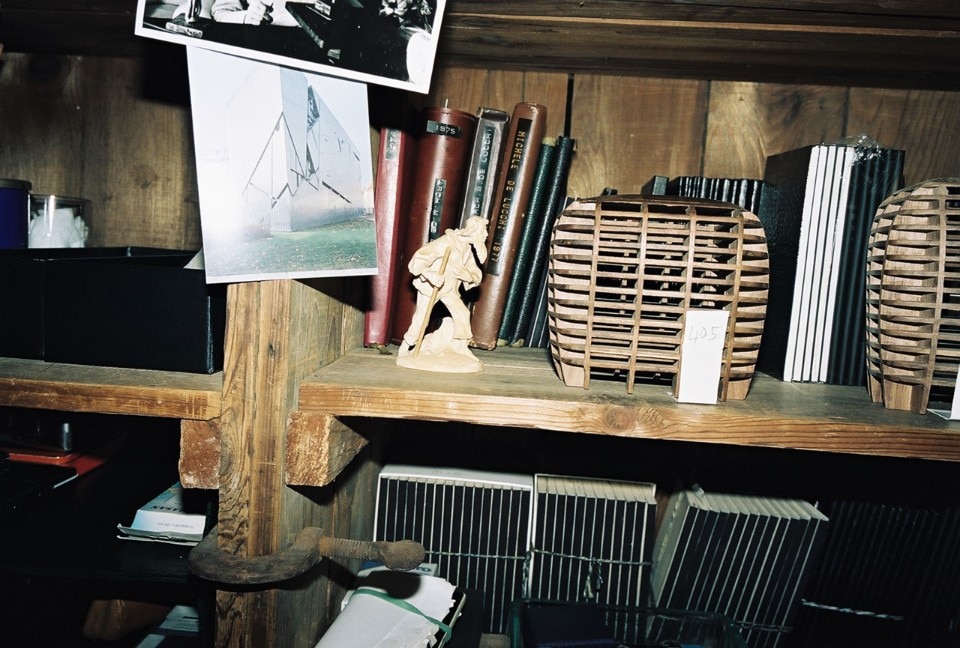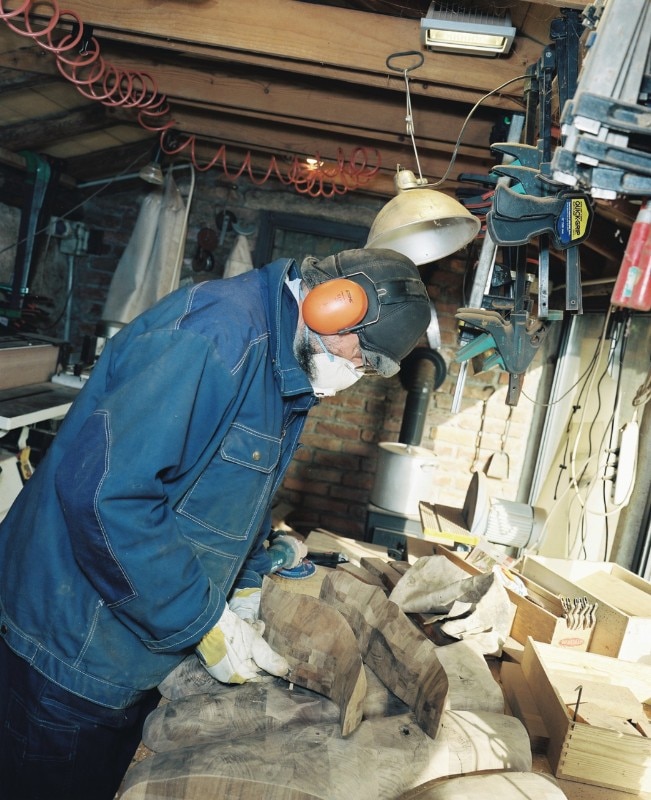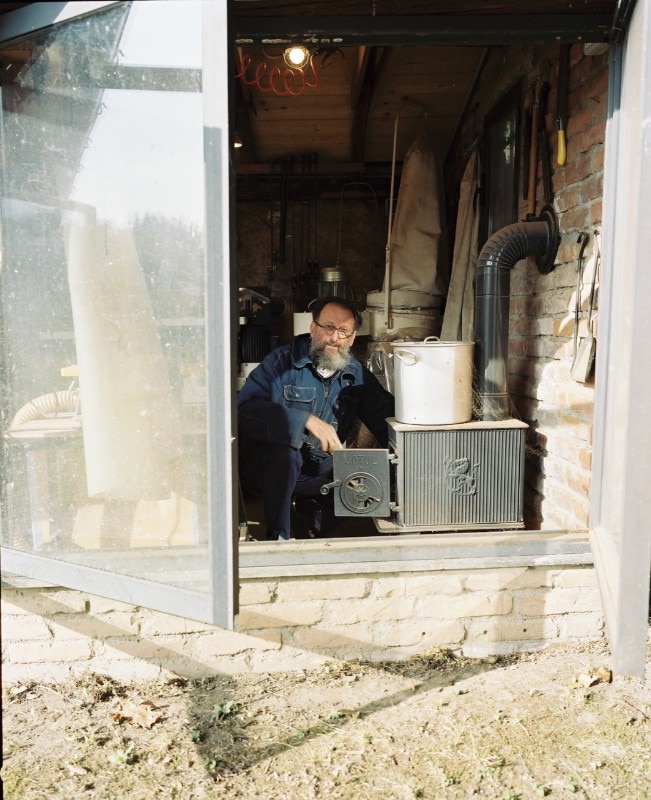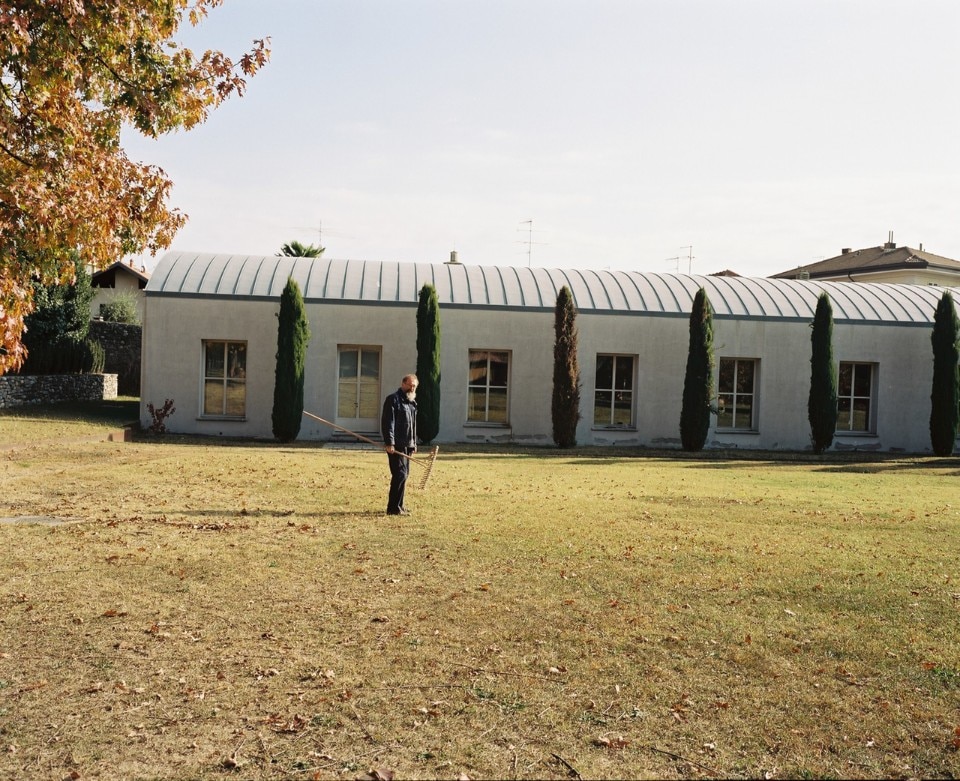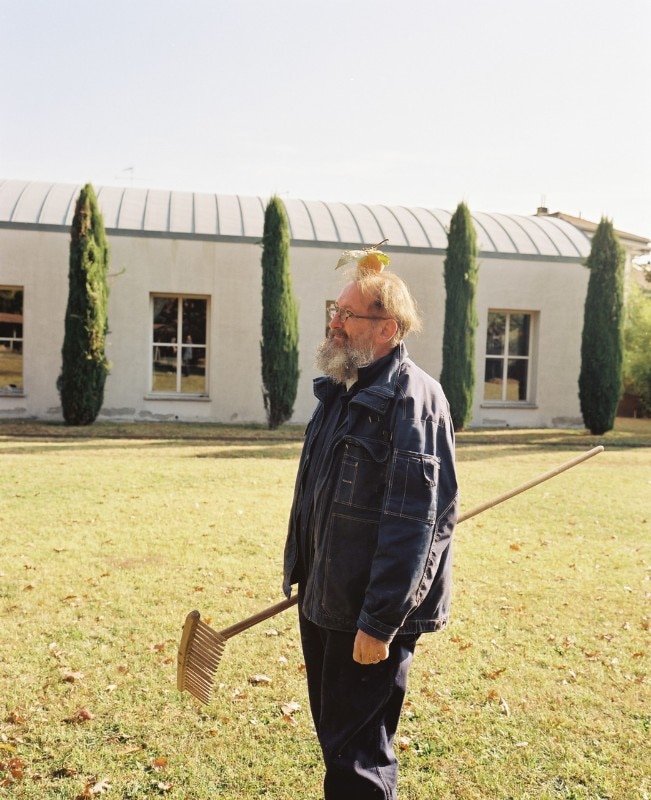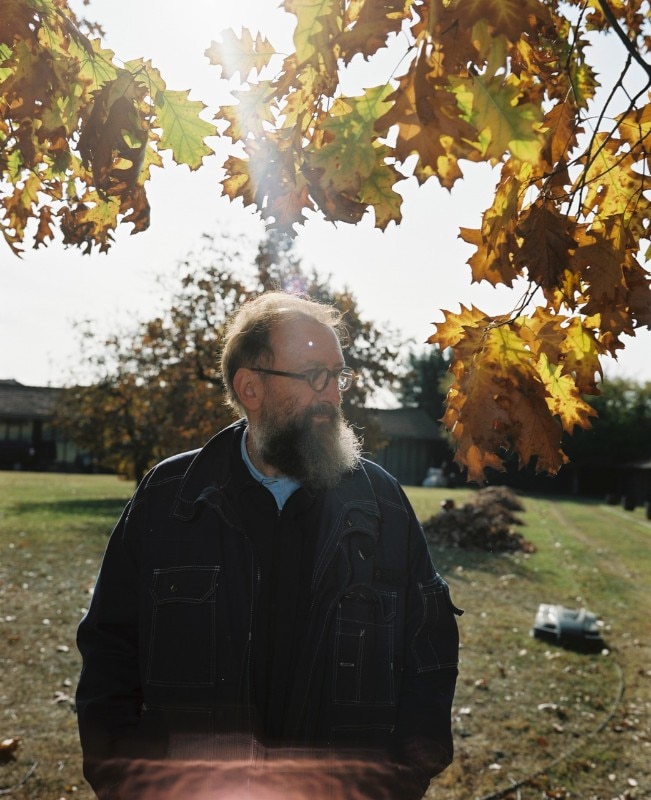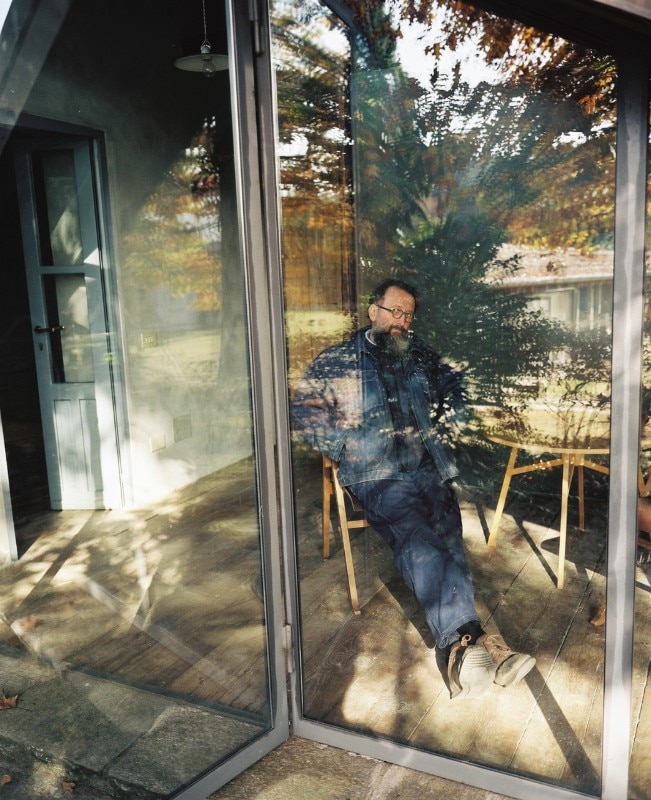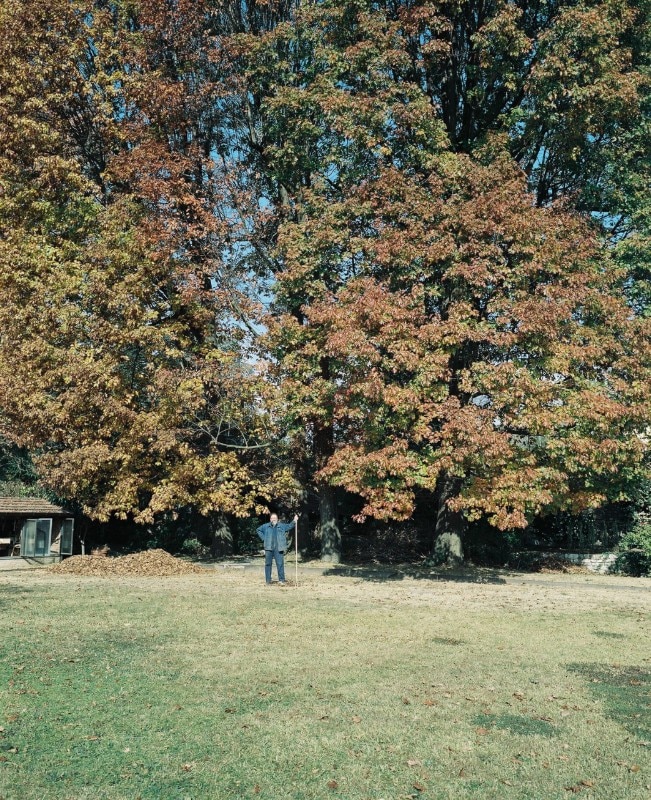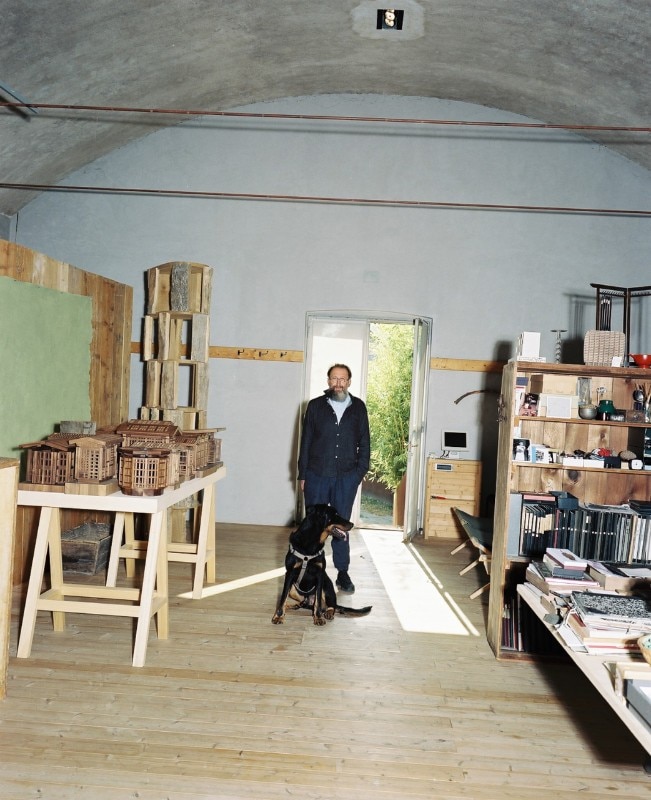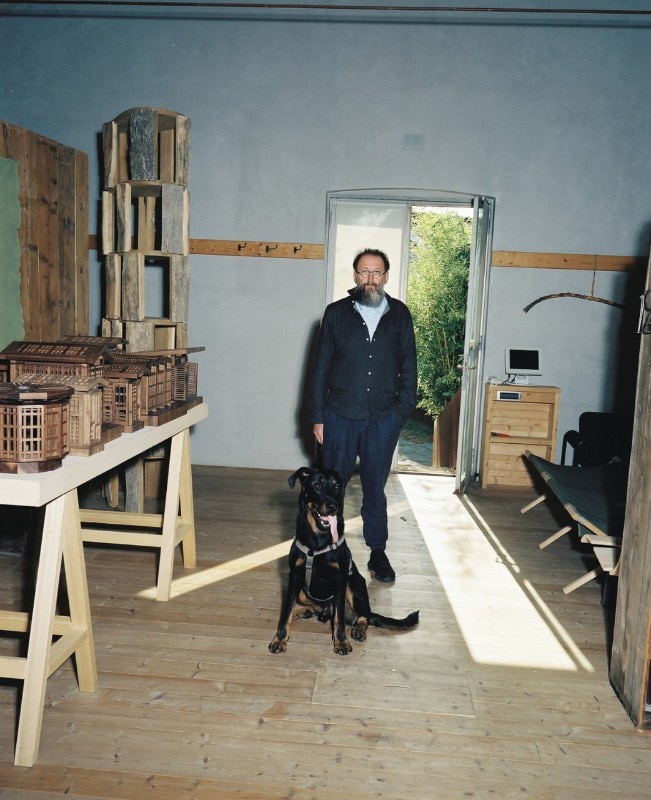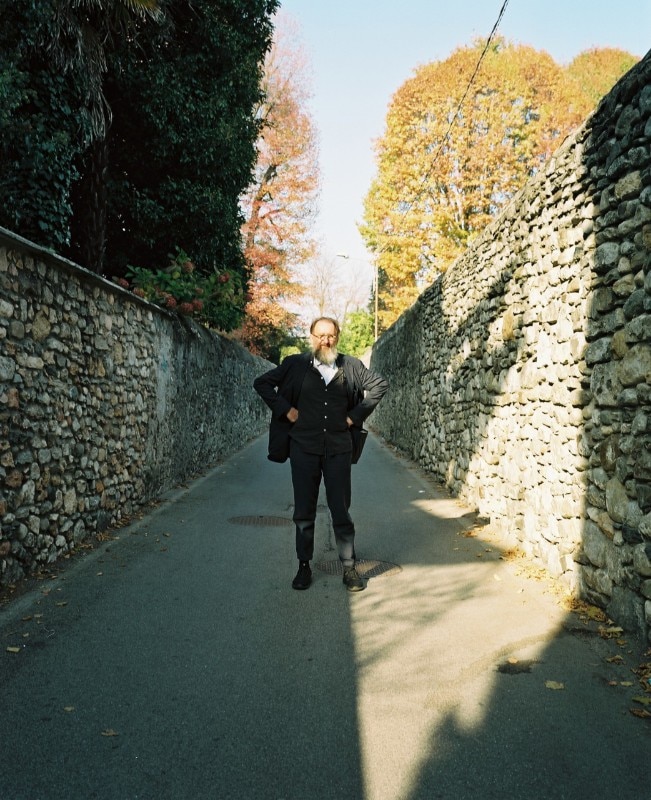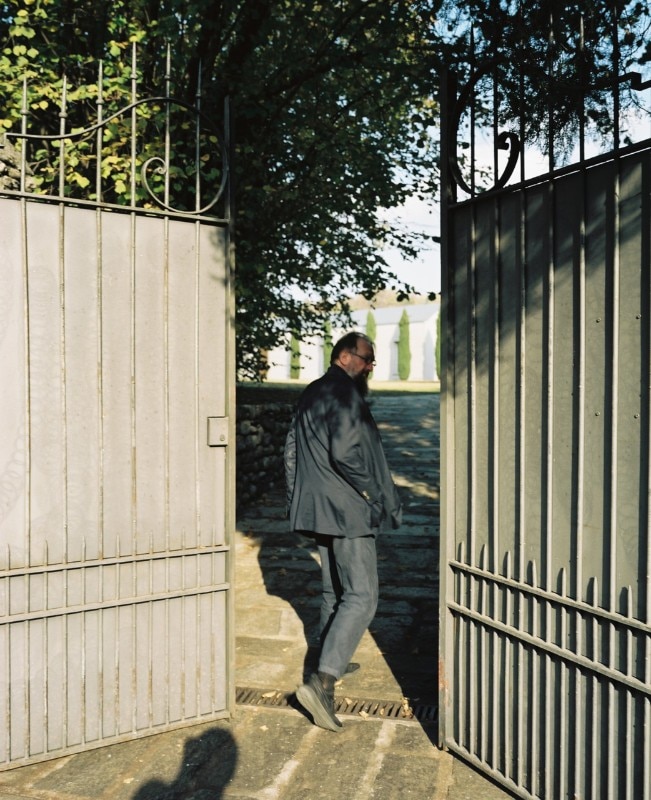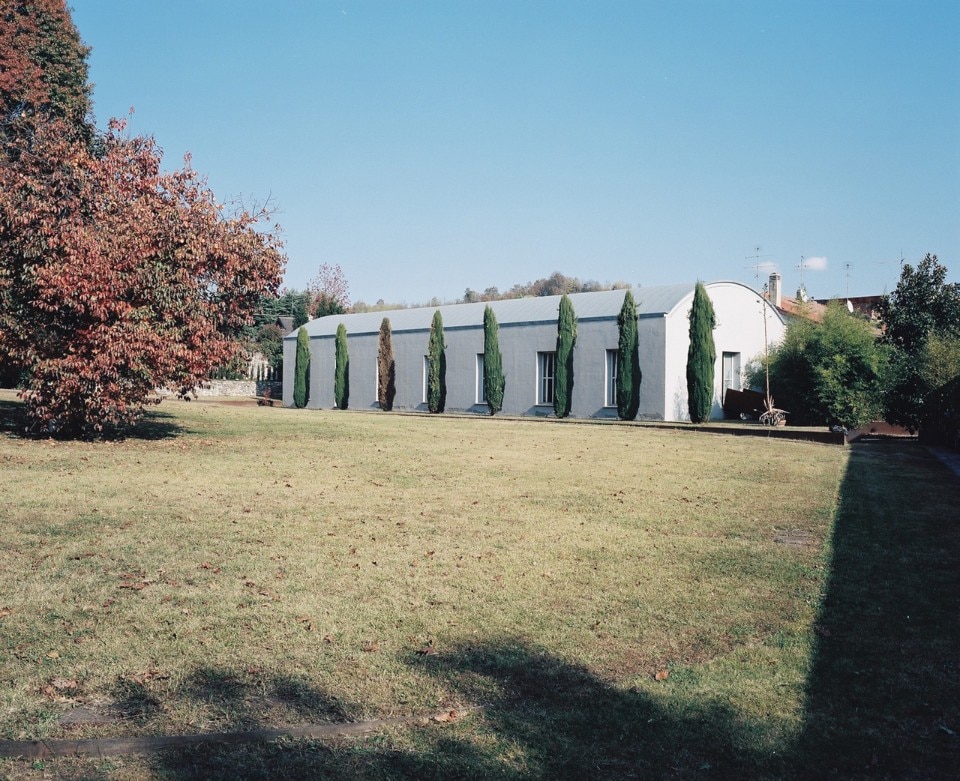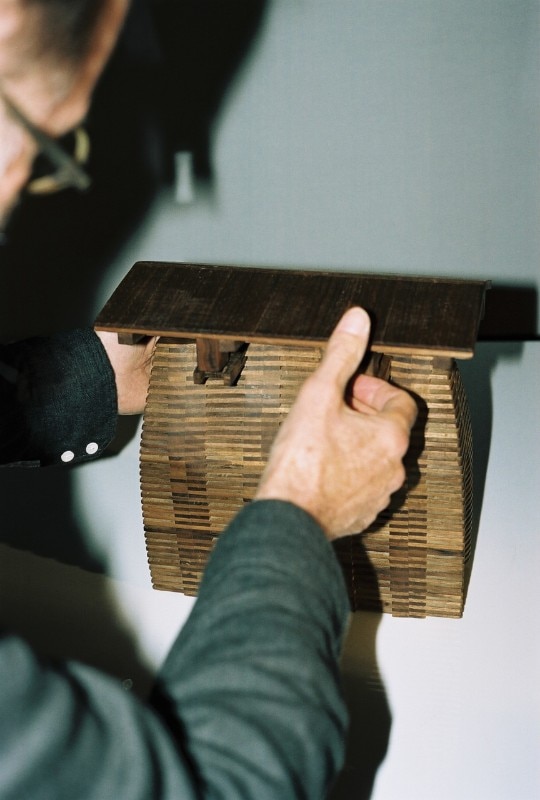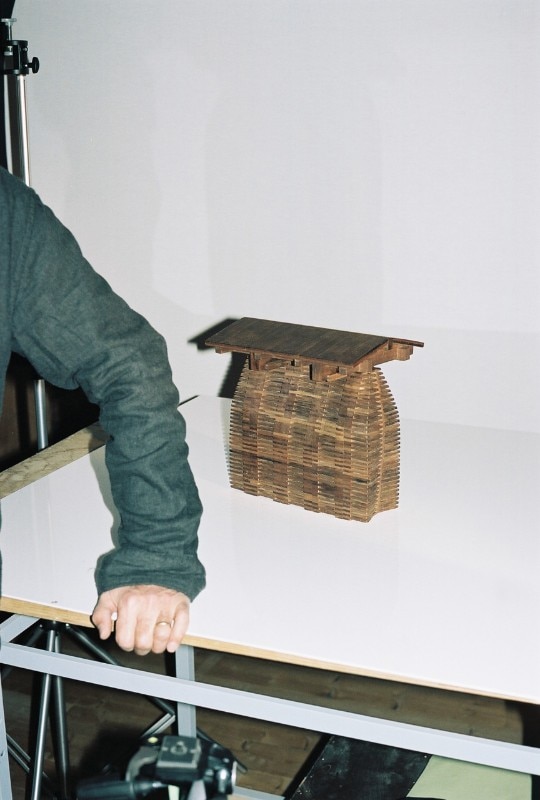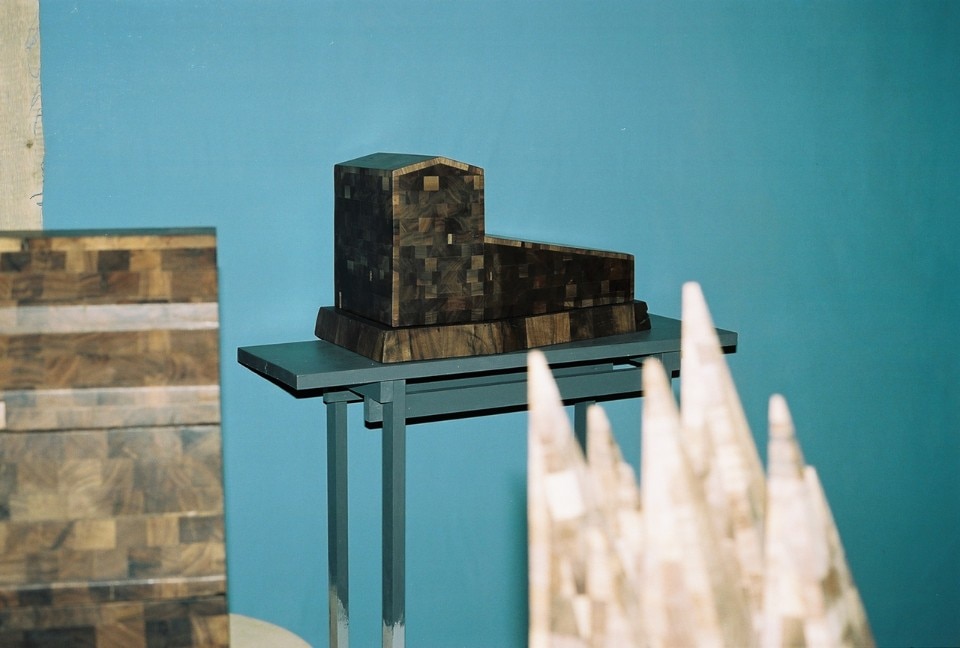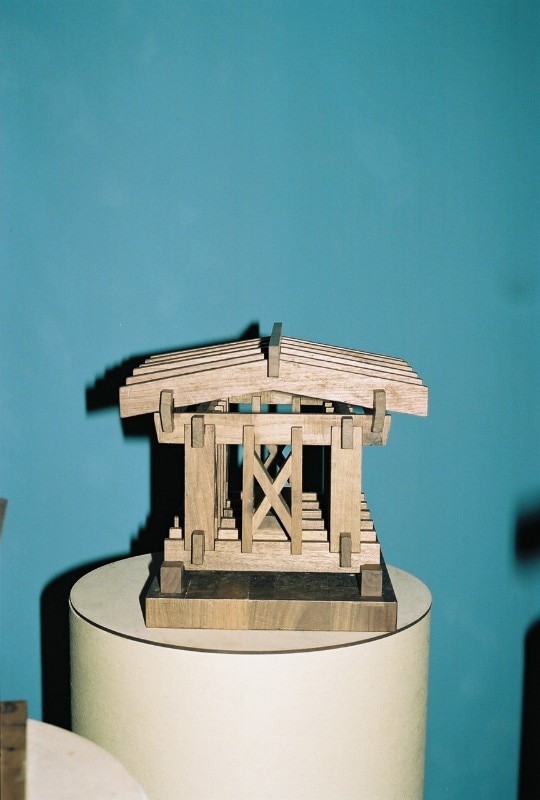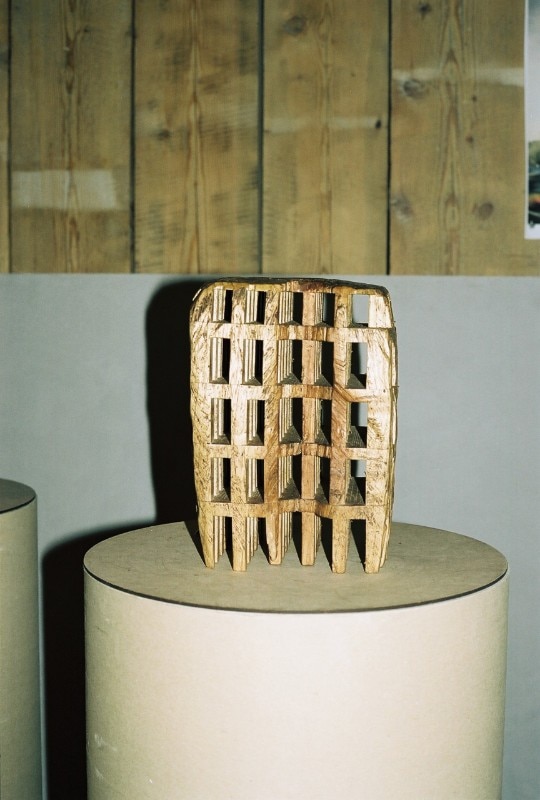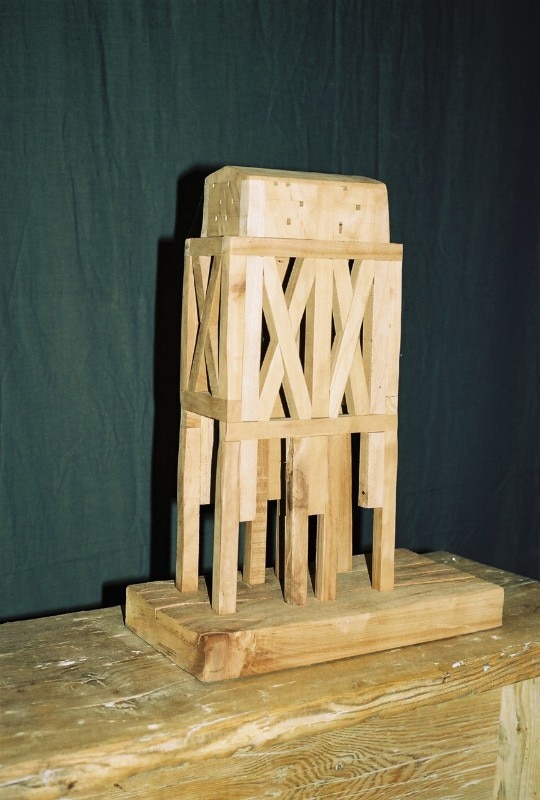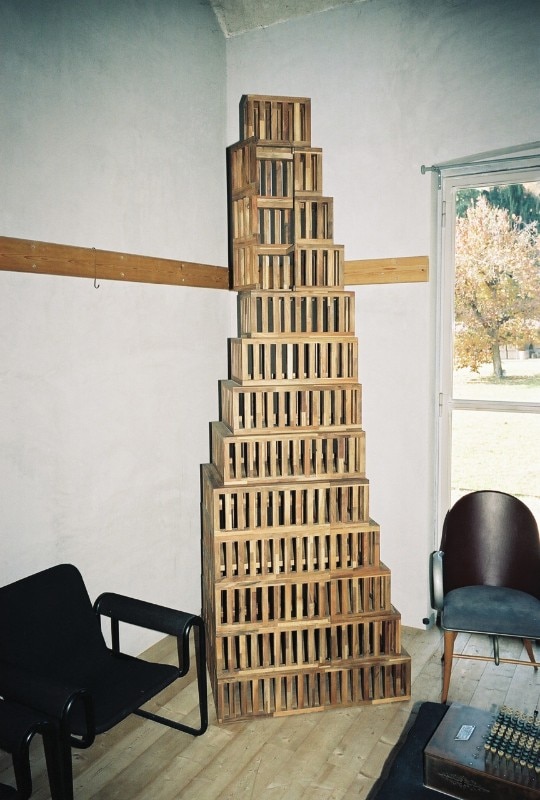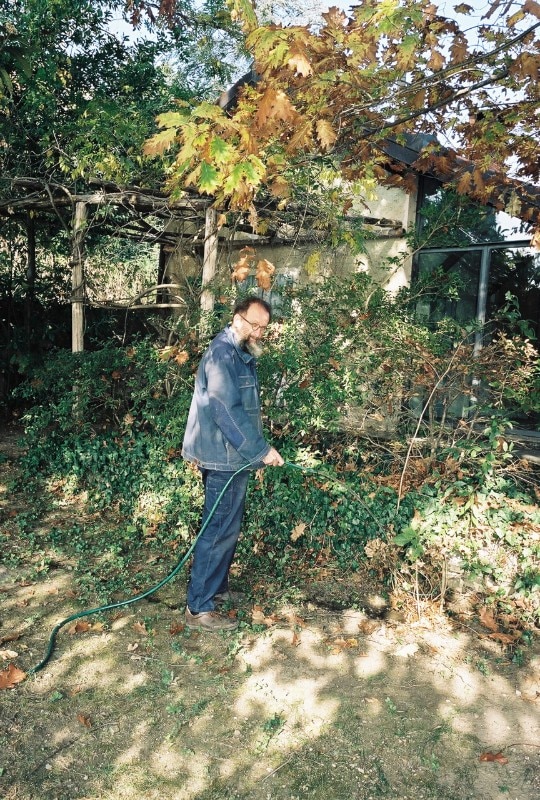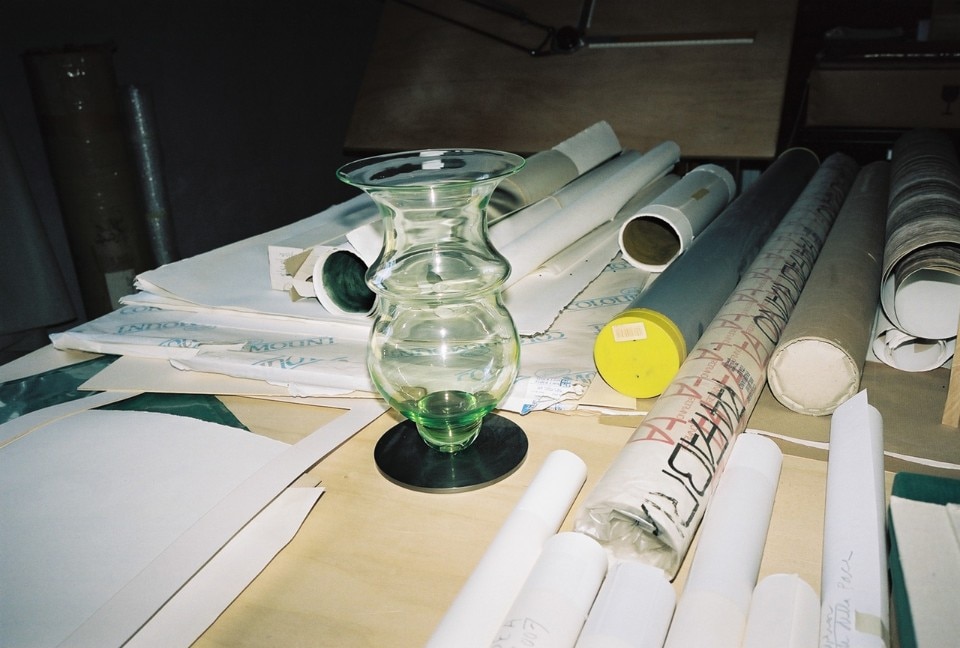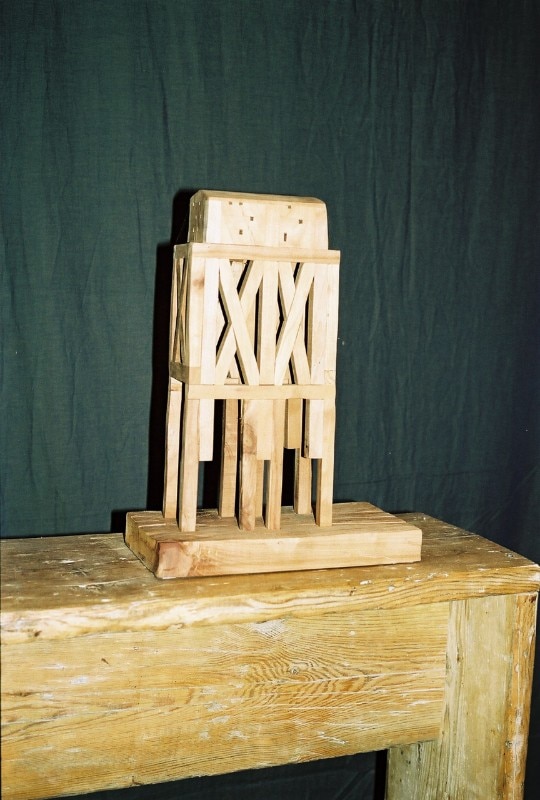Michele De Lucchi is a tall, very elegant gentleman, with essential but kind ways. He dresses in a style that on one side looks at the military lines, on the other side those of Yohji Yamamoto. Difficult to understand which one will prevail. He has a thick, grizzled beard, which makes him show a little more of his age but who has chosen, as he says, to stand out from his twin brother. From which, however, the mother distinguished it by a small speck above the cheekbone. The logo of his studio is made by a small 'a', who stands for an architect, and his monogram, MDL. More than a synthesis, a vision, or rather a Weltanschauung. In fact, when MDL meets you, he looks at you first and then smiles and hugs you. Get immediately empathized, making you feel part of his world and its references, even if you perceive that it is not an easy exercise, nor taken for granted. After a while 'that you frequent, you notice that MDL moves in the days as in the spaces, as if it had happened there by chance, observing with detachment, but with intensity, the proportions between things and people. To do this he always tries to gain a secluded, lateral, almost minimalist position. The only one, according to him, able to change the sense of things, the position in space.
It is a singular attitude for one of the reference figures of the global creative star system since 1987, when MDL designs the lamp that will sell the world's most exemplars, the Ptolemy of Artemis. Instead, it is as if he did not want to bother, MDL, or anyway as if he wanted to go unnoticed to draw on his black notebook or write his thoughts, as when he is on the train from Angera, where he lives with his family and has the laboratory and archive to reach Milan, where he is studying. But things are very different. When MDL starts talking, you feel that the gentle, reserved, very polite and almost shy gentleman possesses an uncommon power of vision, a capacity for concentration and transmission of thought that knows how to involve you in the dimension of architecture and society and that 'opposite of that line celebrated and frequented by prominent personalities in the world that could be summarized in the speech that Rafael Moneo held at Cersaie a few years ago: "Buildings are not objects". For the Spanish Pritzker Prize and Harvard teacher, "the analogy between buildings and objects completely ignores the nature of architecture, which instead seeks to integrate with the context, amplify and create identity. Which means that those who design buildings and cities have the privilege, and the commitment, to consider the whole to design ". Without any controversy, the path of MDL is the antithesis of this line of interpretation.
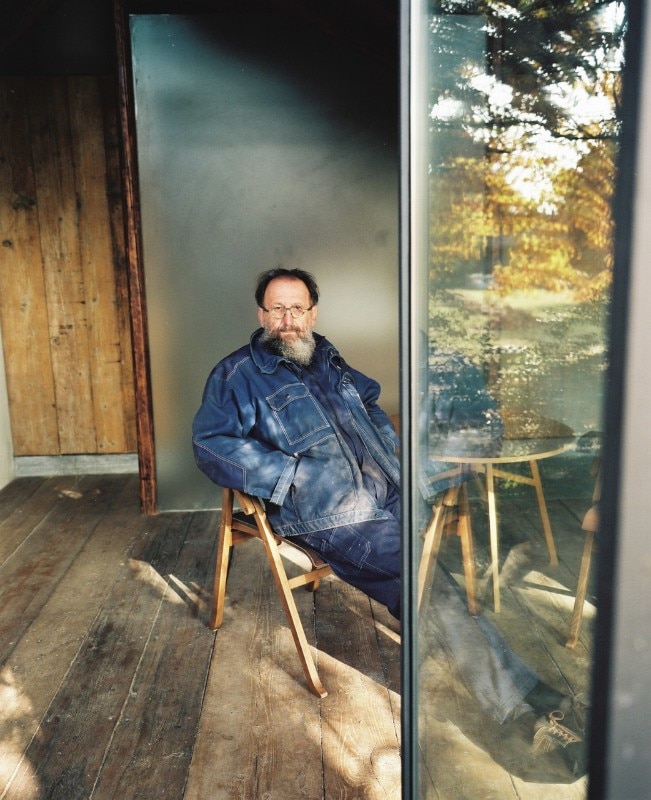
It claims, from an unconditional lover of animals, that men are different because, unlike animals, they make objects, using them and building them from that first moment - about two million years ago - when a naked, defenseless, smaller and weaker monkey of the others, he first started to use and then to build tools to defend himself, produce artifacts and change the world, building one made by her, in her own image and likeness or in any case for her own use and consumption. It is the first scene of Stanley Kubrick's 2001 masterpiece: A Space Odyssey, which remains an obligatory point of reference for De Lucchi. Only man, in fact, knows how to make reproducible objects on various scales - ranging from sharp stones to houses, from books to bridges - among which there is no substantial difference, except for proportions and points of view, in a space which turns on itself as the throne of the Madonna del Bordone by Coppo di Marcovaldo, which closes with the experience of Byzantine painting and opens the modernity of Masaccio and Giotto. Architecture, therefore, can only be an architecture of objects that, from lamps to buildings, move in space on a different scale and that, through this position and this scale, assume functions that can change according to the observation point. . At the beginning it was the tool to defend oneself from stronger animals and an overwhelming nature, today of defending animals and nature by the force of man himself, a hundredfold by technology. "Research shows that man, at the beginning of time, had three things that distinguished him: he was naked, had hands different from those of other primates and, above all, had the imagination, that is the ability to think laterally and find new solutions, without ever getting tired. For this reason, sometimes I defined myself as an evolutionist architect, because I am inspired by homo sapiens, which has been able to constantly evolve organizing new solutions ".
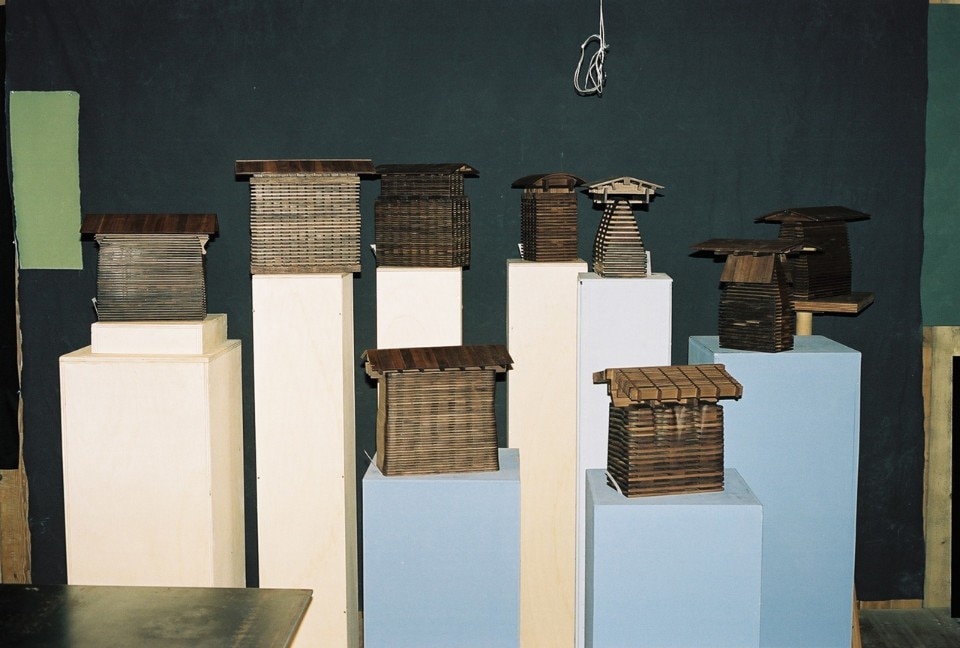
In fact, MDL's career began after graduating in architecture in Florence, where he became assistant to the Design course held by one of the university's institutions, Adolfo Natalini, thanks to which he came into contact with the first manifestations of radical design founding the Cavart group, which organizes radical artistic events inside the Venetian quarries.
The next step is in Milan where MDL, in 1979, meets Ettore Sottsass, who invites him to participate in the Memphis group and give him the strength to start his own business in 1980, without renouncing to dialogue with different experiences, like the group of CentroKappa and, above all, with Alchimia. Sottsass is a central figure for MDL. He introduces him to the Italian industrial design environments, first of all in Olivetti, where MDL begins an indispensable and fruitful collaboration, designing the Synthesis furniture and being appointed design manager, a role he maintains until 2002. It is the inspiration of light Adriano's ideas and community to allow him to deepen the reflection on the world of work and its new protagonist, the computer, which MDL will rethink for brands such as Compaq, Philips and Siemens. And it is here that Ptolemy was born in 1987, thanks to the intense research experiences to which De Lucchi had taken part in the seventies and eighties.
Over the years I have understood that to design you must love industry, even if it is not easy. Because it's all the good and the bad we have. If the role of the artist in ancient times was to show the beauty of nature, the role of the designer today is to show the beauty of the industry.
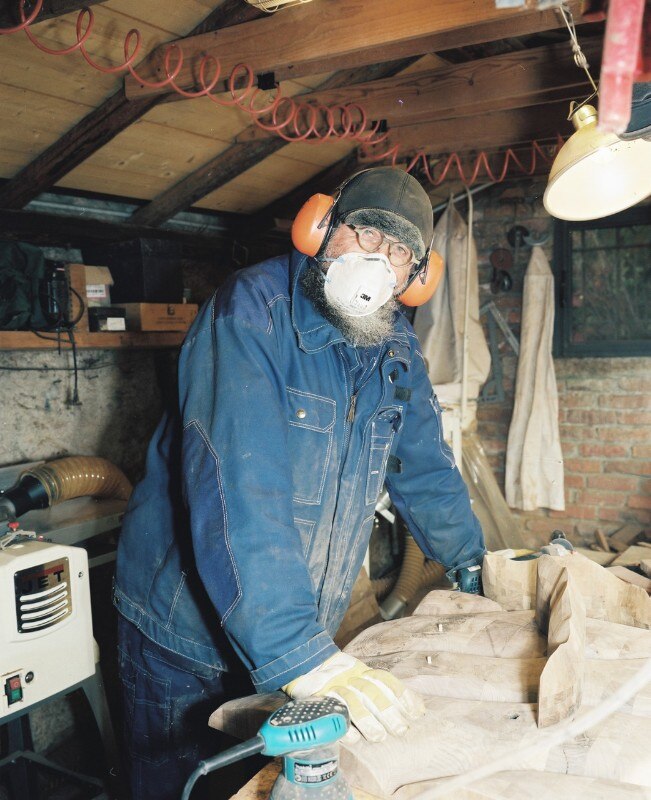
A belief that does not prevent him from winning contests for the imagination of spaces and companies such as the redevelopment of the German railway stations and the redefinition of the Deutsche Bank bank offices, where the wealth of values and experience elaborated and sedimented in Ivrea are fundamental . It is in these design dynamics abroad that MDL deepens the relationship of the architectural project as an industrial object, bringing it back home with the renovation of the buildings of Enel, Olivetti, Piaggio, Poste Italiane and Telecom Italia, but also museums such as the Triennale di Milano, the Neues Museum in Berlin and, in closer time, the Gallerie d'Italia in Piazza della Scala in Milan.
In 1990, MDL performs another exercise of creative imagination, founding Private Production, a brand dedicated to the creation of objects without commission that are essential for the exploration of research, just like the 'stacks' and the 'casette', which Angera's laboratory, with a chainsaw and carpenter's tools, dressed in a worker's overalls and with a craftsman's headphone. At the same time, he curates exhibitions, always trying to rethink the relationships between spaces and objects, such as the Scuderie del Quirinale, Palazzo delle Esposizioni in Rome, San Giorgio in Poggiale, near Bologna, or the Cini Foundation in Venice. After winning the third Compasso d'Oro for Olivetti's ArtJet 10 printer, in 2002 he accepted an invitation to teach first in Venice, at the IUAV, where in 2004 he became an ordinary professor, then at the Polytechnic of Milan, from 2008. He is another fundamental step in the architectural design of MDL, which as a private production offers its students a visual path where the suggestions of art are embodied in the status of the project, design and architecture. His commitment to the university, in fact, is above all an invocation not to give up experimentation, decisive for a country like Italy and for those who want to invest, providing those platforms that are able to maximize their merits and make them more competitive. Only in this way the beauty that derives from talent can be codified and developed, thanks to the same criteria that are used and measured in the industrial production of the big series.
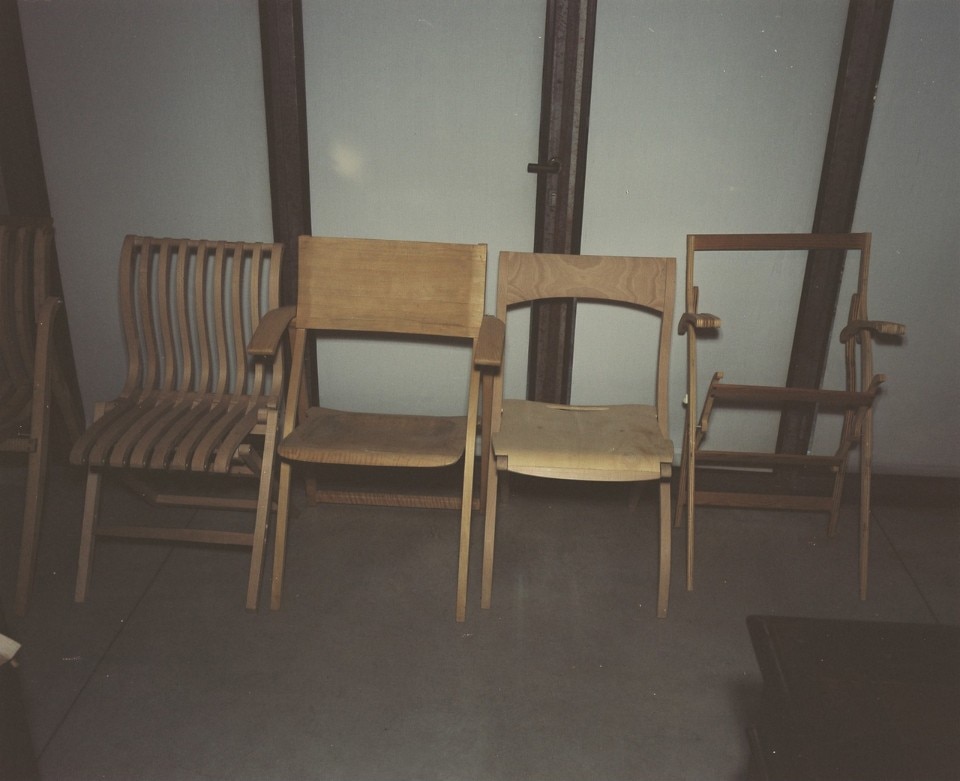
It is in these years that MDL participates in the redevelopment of the Rykhe district in Tbilisi, from which the opportunity arises to collaborate with the Ministry of Internal Affairs and then to design the Bridge of Peace in the Georgian capital, as well as the Palace of Justice and the Medea hotel in Batumi, cultural rather than architectural merits that make him receive Georgian honorary citizenship from President Saakashvili. It becomes difficult to remember all his projects, which range from industrial production to interior design for offices, through collaborations with Enel, Piaggio, Hera and Intesa Sanpaolo - who also commissioned credit cards. Looking at it from the perspective of objects, however, De Lucchi's vision recalls the anthropology of Claude Lévi-Strauss and the economy of David Ricardo. It is a path of value, that of MDL, or rather a path that digs into the usual and ordinary of everyday life to rediscover the lost value of objects and, therefore, their relationship with people's lives.
We have tried from the beginning to give value to things, to objects, from the first moment in which we started to design and build them. In reality we are the only animals that have managed to do it, an attitude that condemns us to build more and more, in ever-changing and ever-better forms. We are naked animals with a particular social spirit, equipped with hands and with a great capacity for imagination. Despite this, we have arrived at the point where we have too many objects and we no longer know how to assign a precise, meaningful value to help us decide whether to use them or throw them away. For this exercise we use the imagination, our faculty that has always allowed us to give value to a symbol or an object. And imagination is driven by the meaning of existence, by the adaptability that can help us to clarify the choices we make every day, trying to give value to things and giving them a name, then a meaning for ourselves and for the others.
In this regard, MDL often cites the theory of human evolution, which in the last interpretations speaks of cultural platforms, true interfaces of genetic exchanges and experiential sedimentations that do not grow in synchronicity but for quantum leaps, of information stock that act for independent, almost algorithmic but causal paths. It is thanks to these interactions between platforms that creation takes place, a phenomenon that becomes particularly decisive, for MDL, in design and architecture.
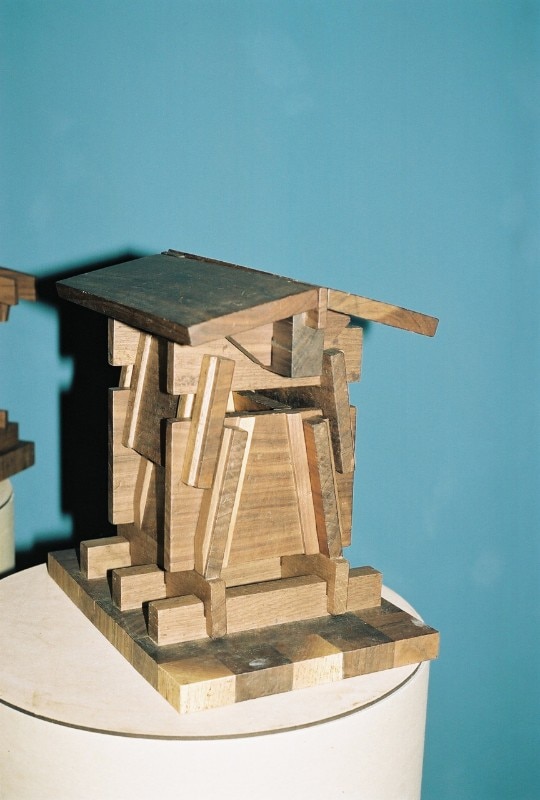
From January 2018, for ten issues, MDL was the new content director of Domus, called to bring his vision to a system that changes governance, restores the sense to objects, reconstructing a lost value or otherwise difficult to attribute in the vortex of the globalization of styles and trends. He did this by declining this vision through a new alphabet, which built a semantics made of key words such as rebellion, duration, silence, emotion, uniqueness, chaos.
Because life is born in primordial magma and all evolution is based on an uncontrolled sequence of events. The force of gravity holds the world together and so much culture is based on the challenge to this mysterious and magical force.
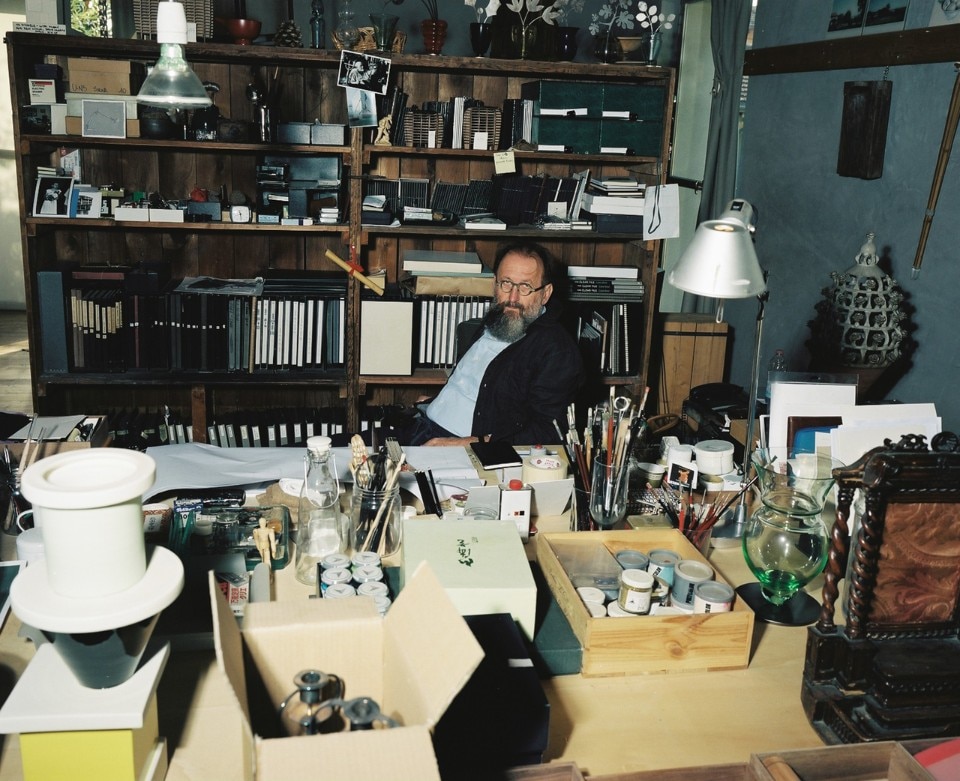
This is where MDL moves. Similarly to the research on the space of architecture that in recent years, Paolo Baratta has imposed on the Venice Biennale. It is here that, for MDL, architecture and design must be exercised. To build or rebuild that value that is hidden in the secret of things, in the arcane dimension and in the links that regulate the relationship between subjects and objects that takes the name of design, architecture, society. Because only here is the uniqueness, "which represents an unexpected and unique proposal, fascinates by its charge of novelty, for the drive to look beyond".
They are, sometimes, also simply alternative solutions to the way of thinking things, and therefore of living, but, precisely because they do not represent the obvious custom, they free the field and widen the horizon.
Refusing to consider the possible alternatives or, as otherwise theorized by Steven Johnson, 'the adjacent possible', means not predisposing oneself to the arising of ideas and the alternation of interpretations of existence. A program that deserves to be lived.


